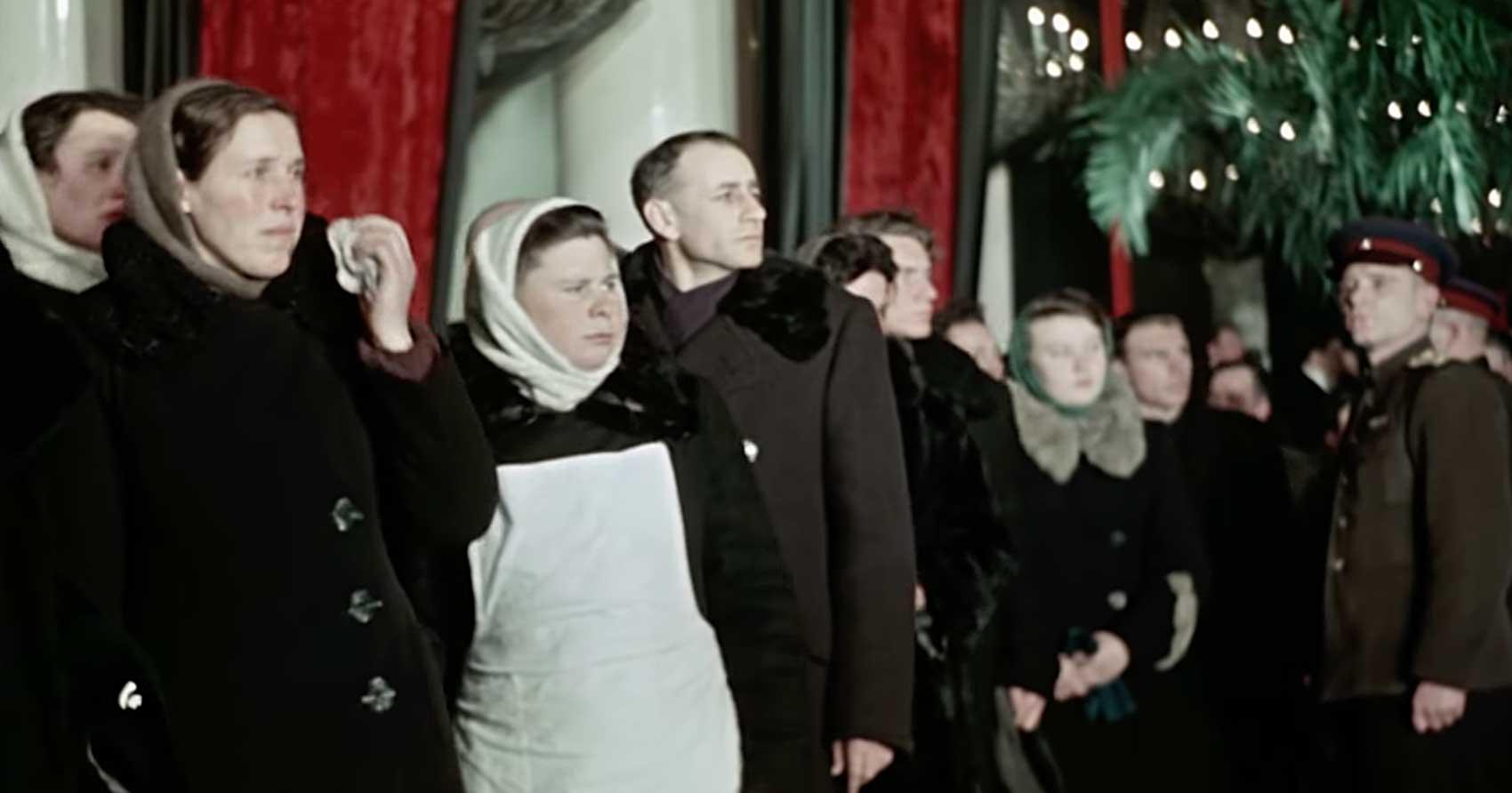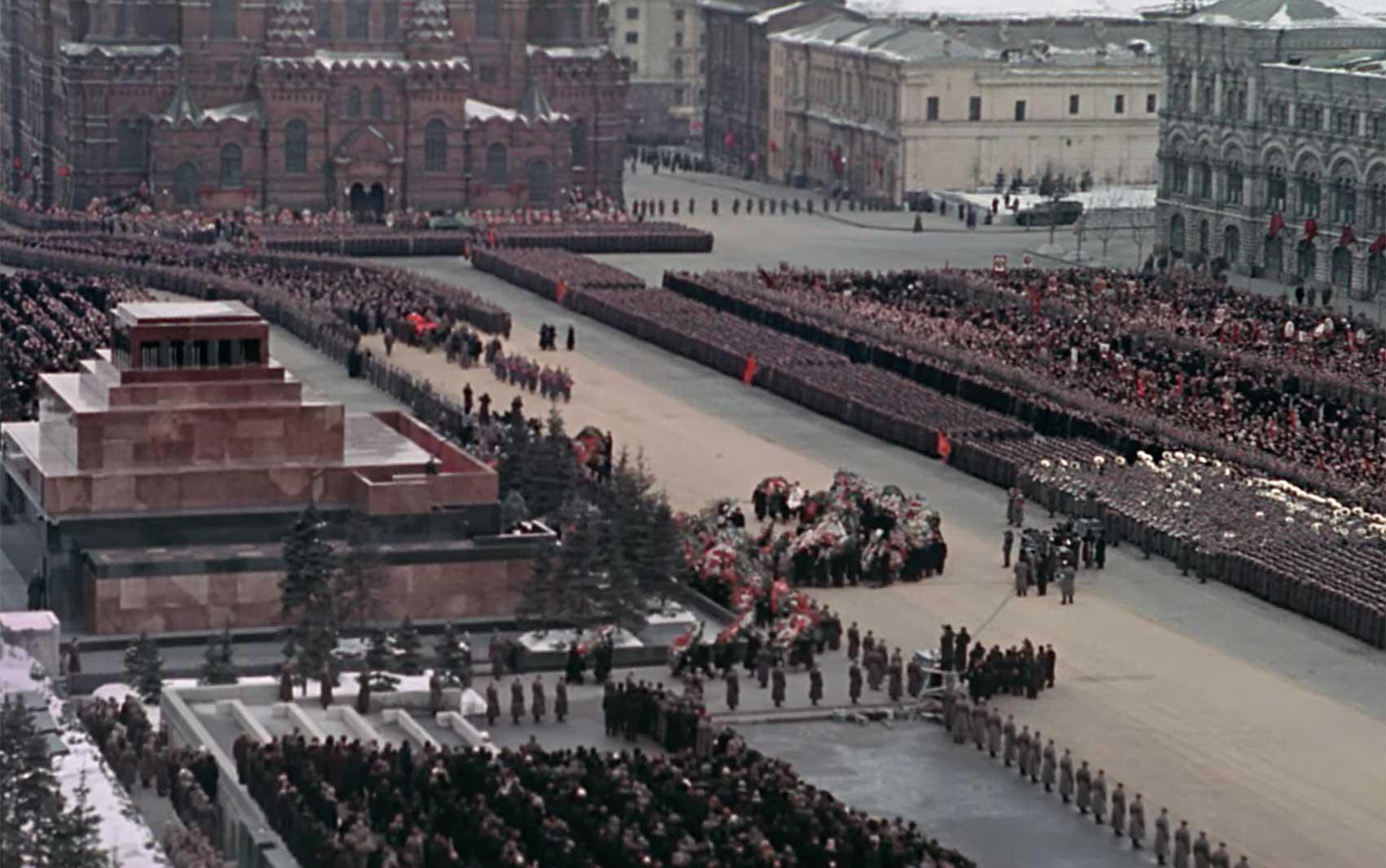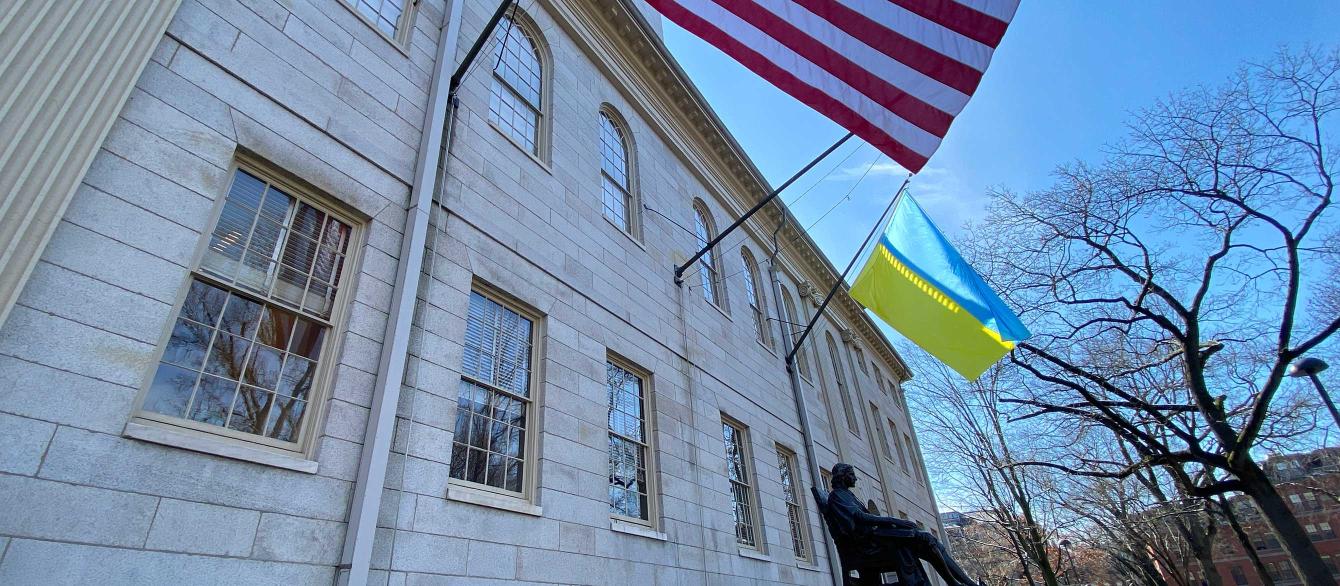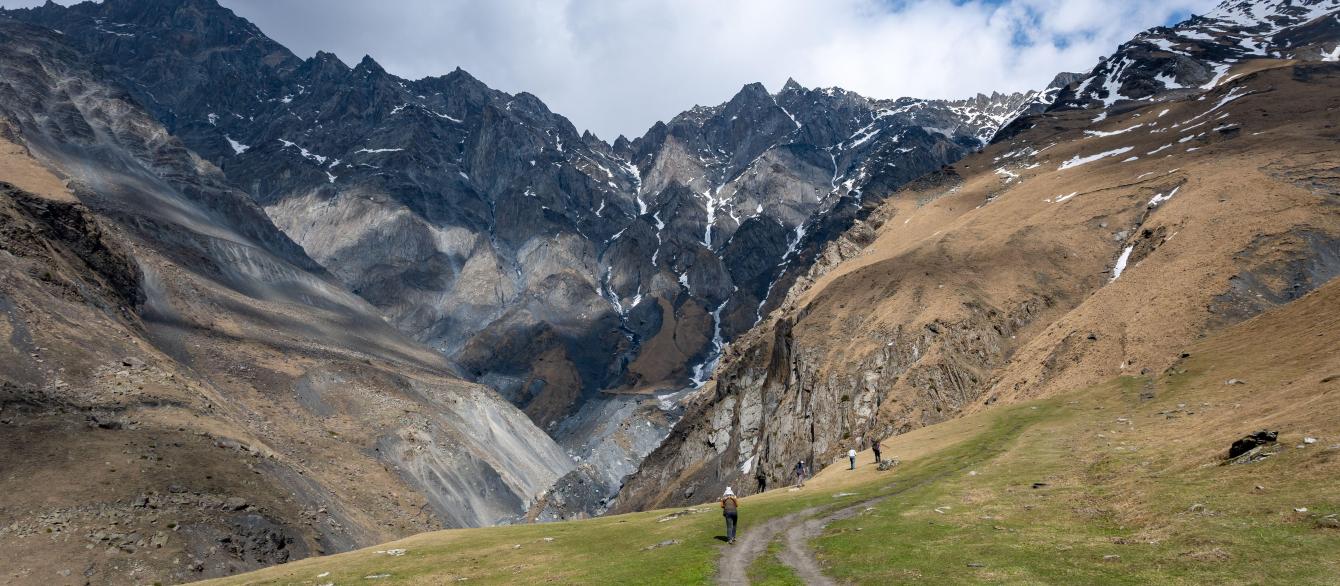For the second time in four years we have a new film about the death of Joseph Stalin. In 2017 the director Armando Iannucci released his macabre comedy The Death of Stalin, which was based on a French graphic satirical novel by the same name. Stalin’s henchmen and heirs, most notably Nikita Khrushchev, Georgy Malenkov, and Vyacheslav Molotov, were portrayed as little more than clowns, while only Lavrenti Beria, whose loathsome character was vividly depicted, came off as an evil, scheming, would-be dictator who gets his deserts more quickly in the film than he eventually did in real life.
Now we have the documentary film State Funeral. It is available via Amazon Prime and other online services, if not in movie theaters near you. Based on official newsreel footage of the events in early March 1953, the film, directed by the Ukrainian Sergei Loznitsa, provides a vivid, frightening panorama of ceremonies across the full length of the Soviet Union as party leaders scramble to honor the suddenly dead Stalin while a stunned population, overcome with grief and fear, pours into the streets.

The first hour or more is repetitive but mesmerizing. We see enormous crowds gathering in Moscow and other cities, large and small, from Vilnius to Vladivostok. There are endless displays of gigantic wreaths to Stalin’s memory piling up in city squares, as if one factory collective felt the need to outdo the next with a sign of obeisance. Speakers harangue them with the usual Soviet demagoguery about mourning the loss of their “great teacher” Stalin, pledging to follow the lead of the Communist party, while individual citizens look morose and grim, many wiping tears from their faces. If you are a non-Russian speaker and happen to watch without subtitles you may feel left out, but the empty, droning rhetoric, endlessly similar and endlessly meaningless, leaves a Western audience with the same kind of hopeless inertia that it must have left the crowds themselves.
Stalin had collapsed from a stroke sometime during the day of Sunday, March 1. It had taken hours before his guards at the dacha had dared to enter his private quarters without being summoned, and another number of hours before the alerted leadership thought it necessary or prudent to summon doctors. But the population and the world at large were not made aware of Stalin’s collapse until March 4, the day before he died. His body lay in state for three days in the Hall of Columns in the House of Unions where Lenin had also been mourned.

The empty, droning rhetoric—endlessly similar and endlessly meaningless—leaves a Western audience with the same kind of hopeless inertia that it must have left the crowds themselves.
We see streams of people moving through the streets of Moscow toward the House of Unions. In spite of a pervasive police and military presence, the regime lost control of the crowds; Khrushchev later admitted that well over a hundred had been trampled to death, a scene of carnage that the film fails to show. It is haunting to watch these endless crowds, men, women, and children, toddlers in a parent’s arms, everyone dressed warmly against the winter chill, making their way through the streets, up the stairs and through the impressive hall, their startled gaze turned toward the bier where Stalin’s corpse lies surrounded by heaps of flowers and wreaths. And then the camera suddenly shows Beria, Malenkov, and others in “living color” as they stand by the bier. It is a brief, startling glimpse of inhuman corruption, the heirs thrilled to have survived and eager to exert power of their own.

Then, just over an hour into the film, we watch as Beria, Malenkov, and the others carry the casket out of the House of Unions to the street where it is placed on a caisson. The legendary Marshal Semyon Budenny (who was famous for leading a cavalry unit during the Russian Civil War), joined by thirteen other marshals each carrying a medal or military decoration on a cushion of crimson velvet, walked at the head of the procession. Stalin’s heirs, joined now by the Chinese leader Zhou En-lai (Mao Zedong did not make the funeral), slowly follow the caisson to nearby Red Square, where 50,000 people are gathered. There, as they stand on top of the Mausoleum, we watch Khrushchev introduce Malenkov, Beria, and Molotov to deliver their tributes. Without subtitles viewers may not grasp the political dimensions to their remarks. Malenkov made assurances that the population deserved to enjoy a higher standard of living, while Beria, without a hint of irony in his voice, promised that the Soviet people “could work calmly and with conviction, knowing that the Soviet government will maintain their rights guaranteed under the Soviet Constitution.” Already, with a high degree of subtlety, the post-Stalin era has begun.

There is one thoroughly human moment that startled me with its spontaneous and chilling import. While Malenkov is speaking in front of a microphone, Khrushchev turns toward Beria and whispers in his ear, one comrade to another. Was he telling a joke? Was he reminding Lavrenti Pavlovich that he would be speaking next? Beria is unaware at that very moment that Khrushchev has already begun to conspire against him, to be rid of him before Beria, capable and ruthless as he was, could turn on them. We know this, however, and come away with a certain, awesome respect for how Khrushchev was playing his cards.
Then, abruptly, Khrushchev declares the funeral service over and the body is carried into the Mausoleum. The utter scale of the tribute is overwhelming, but then, with the film over, a closing caption reminds us of the multitude of Stalin’s victims—numbering in the millions—and that only in 1961 was his body removed from the Mausoleum and buried near the Kremlin wall. Beria would be arrested in June 1953, then executed in December. Having studied these events so closely for my book The Last Days of Stalin, it is sobering to watch these newsreels with their stark reminder of Stalin’s legacy and allure.






